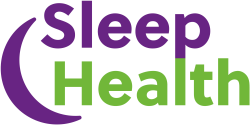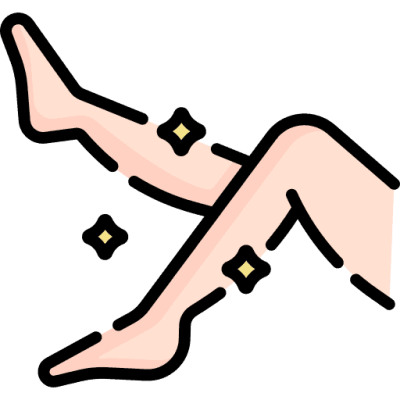You may not have considered the issue of bedding technology, but increasingly bedding manufacturers are being asked to come up with solutions to health issues that can be exacerbated whilst lying down and this has resulted in the invention and production of a variety of pillows. Raising the level of your feet from time to time aids blood circulation and can improve existing conditions as well as preventing others from developing.
Let’s address some prevalent inquiries regarding knee and wedge support pillows, which influenced our selections. These pillows are designed to raise legs at a therapeutic tilt of forty-five degrees or higher, providing numerous health benefits alongside their practical application post knee, hip, and leg surgeries. Living in a warm climate, standing for several hours daily, or suffering from frequent leg cramps could make sleeping with a leg elevation pillow beneficial for you.
Our Recommendation 🇺🇸

KingPavonini Leg Elevation Pillows
The leg elevation pillows have a top layer crafted from soft memory foam infused with gel particles, ensuring long-lasting comfort and freshness. The base consists of two layers of high-density foam, which offers robust support and resists deformation over time. With a 40º angle, these pillows provide optimal elevation for the leg, enhancing blood flow and alleviating leg discomfort. They feature a U-shaped contour and an added pad to keep the leg secure, preventing it from moving during sleep. These pillows are specifically tailored for recovery after knee operations, hip and femur replacements, and other leg injuries.
What is a Leg Elevation Pillow?
The essential issue in elevating one’s feet is to keep them above the level of the heart by raising and supporting the legs. These pillows have been ergonomically designed and crafted in such a way as to position your feet carefully and allow them to rest comfortably. Their filling – memory foam, high-density foam or inflatable material – means these pillows keep their shape and offer consistency of support.
Why Might I Want a Leg Elevation Pillow?
You don’t need to have a pre-existing condition to consider this type of pillow and you may in fact be protecting yourself from possible health issues by using one.
- Blood circulation – raising your legs improves blood flow, which in turn reduces the strain on your heart. It also prevents your blood from pooling and offers improved circulation and relief for those who suffer from varicose veins.
- Swelling reduction – raising your legs drains any excess fluid and reduces swelling caused by immobility, injury or surgery, reducing the dangers of clotting and aiding recovery.
- Recovery after surgery – the healing process can be speeded up and possible swelling minimized by raising your legs after surgery.
- Pregnancy relief – swollen legs are often a feature of pregnancy and using a leg elevation pillow can minimise this and reduce the prospect of varicose veins.
- Increased comfort – raising your legs can provide welcome relief from foot pain and back pressure for those who spend a lot of time on their feet or who suffer from swelling caused by sitting at a desk all day.
What is the Right Pillow for Me?
- Shape. Half-moon and wedge shapes are popular, but there are other ergonomic designs. Choose what suits you best.
- Size. Look for a balance between adequate support and intrusiveness. Your pillow should be big enough for your needs, but not so big that it is cumbersome or awkward to move around.
- Material. Memory foam will adjust to the contours of your legs and is ideal for this purpose. But there are inflatable options which are useful for travel.
- Covering. Go for a removable cover, as this can be washed, ensuring your pillow remains hygienic and well cared for.
How to Use My Pillow
Lie on your back with the pillow under your ankles or calves. Use the pillow for 15-30 minutes, or as you feel the need. This can be done daily or as advised if recovering from injury or surgery. Check with your healthcare professional if you have any additional medical conditions.
What Health Benefits do Leg Elevation Pillows Provide?
Wedge elevation pillows not only speed up recovery after surgeries but also present a broad spectrum of health benefits, making them a great choice for relaxation. Studies indicate that elevating legs above the heart during sleep can help fend off serious medical conditions like blood clots and deep vein thrombosis. Leg elevation pillows are ideal for individuals living in warm climates, prone to leg fluid retention. They’re also suitable for those battling specific health conditions such as respiratory disease and congestive heart failure. By raising the legs while sleeping, one can alleviate lower back discomfort, reduce swelling, enhance circulation, and boost energy levels.
How Often Should You Elevate Your Legs Post-Surgery?
Patients are typically advised to raise their legs at least three times daily, for a minimum of twenty minutes, after hip and knee replacement surgeries. Hence, picking the right wedge pillow is crucial. Besides providing an ergonomic incline, an ideal wedge pillow stays firmly in place, eliminating the need for continual adjustment.
How Long Should You Use a Leg Elevation Pillow for Post-Surgery?
While elevating legs three times daily is recommended in the initial weeks after knee and hip surgeries, patients are generally advised to continue using a leg elevation pillow for up to one year following recovery. Many patients find it helpful to sleep with an elevation wedge or incorporate it into their nightly relaxation routine. For expedited healing and recovery, many patients use their wedge pillows while applying ice to the leg and knee area. This helps reduce swelling, decrease edema, and may deter the formation of blood clots.
Conclusion
We hope our guide assists you in choosing the right memory foam wedge, leg cast elevator, or zero gravity pillow to fit your needs. Incorporating one of our top selections into your bedtime routine can enhance recovery speed, improve circulation, prevent cramps, and diminish the appearance of varicose veins. This effective and practical self-care regimen is recommended by medical professionals and physical therapists.





